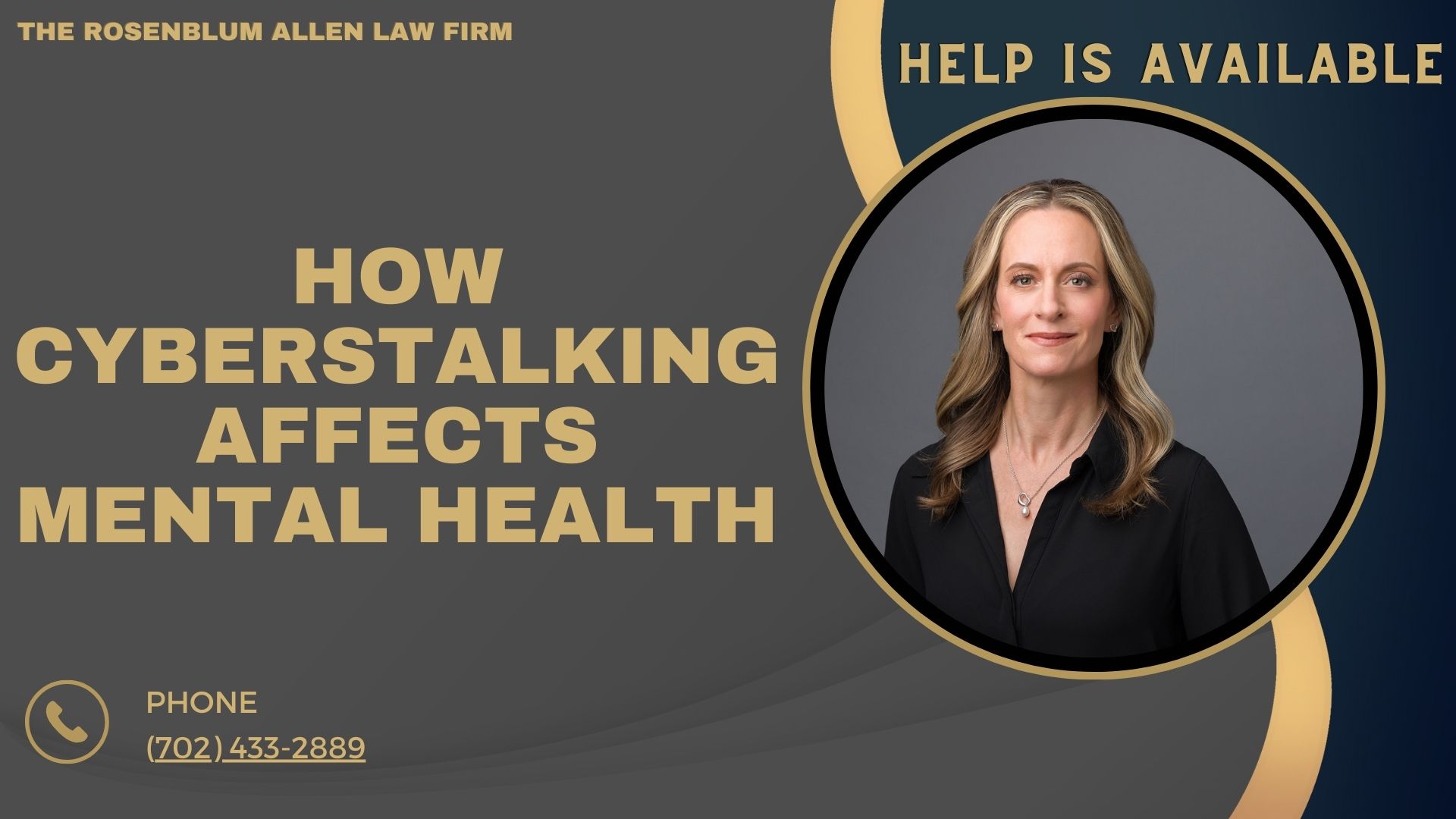Cyberstalking is a form of online harassment that involves using the internet to stalk, threaten, or intimidate someone.

Prevalence of Cyberstalking
Cyberstalking is alarmingly common. Recent statistics reveal that:
- Approximately 1 in 4 women and 1 in 13 men have experienced cyberstalking.
- Victims often range from teenagers to adults, with a significant number being under 30 years old.
These numbers highlight the urgent need for awareness and prevention strategies.
Typical Methods Used by Cyberstalkers
Cyberstalkers employ various tactics to target their victims. Some of the most common methods include:
- Unwanted communications: This can consist of constant texting or emailing.
- Social media harassment: Posting derogatory comments or spreading rumors.
- Hacking and surveillance tactics: Gaining unauthorized access to personal accounts or devices.
Psychological Manipulation Techniques
Cyberstalkers often use psychological manipulation to exert control over their victims. Common techniques include:
- Gaslighting: Making victims doubt their perceptions and feelings.
- Creating false narratives: Spreading lies to isolate the victim from friends and family.
These tactics can leave victims feeling confused and powerless.

Psychological Effects of Cyberstalking
Anxiety and Depression
The mental health consequences of cyberstalking can be severe. Victims frequently experience:
- Anxiety: Constant worry about being watched or harassed can lead to panic attacks.
- Depression: Feelings of hopelessness may arise from prolonged harassment.
Research indicates that victims are at a higher risk for developing long-term mental health issues if they do not seek help.
Fear and Paranoia
Living with the threat of cyberstalking can create an overwhelming sense of fear. Victims often report:
- A persistent feeling of being watched.
- Increased vigilance about their online presence.
This constant alertness can disrupt daily life and lead to significant stress.
Isolation and Withdrawal
Cyberstalking can lead to social isolation. Victims may:
- Avoid social situations due to fear of encountering the stalker.
- Withdraw from friends and family, leading to loneliness.
This isolation can exacerbate feelings of depression and anxiety, creating a vicious cycle. This initial section provides a comprehensive overview of cyberstalking and its effects on mental health. Let me know if you want me to continue with the following sections!

Recognizing the Need for Help
If you or someone you know is experiencing cyberstalking, it’s crucial to recognize when support is needed. Here are some signs that indicate it might be time to seek help:
- Persistent feelings of anxiety: If you find yourself constantly worried or on edge.
- Depression symptoms: Feelings of sadness, hopelessness, or disinterest in activities you once enjoyed.
- Social withdrawal: Avoiding friends and family due to fear or embarrassment.
Overcoming the stigma surrounding mental health is essential. Remember, seeking help is a sign of strength, not weakness.
Available Resources for Victims
There are many resources available for those affected by cyberstalking. Here are some options to consider:
- Mental health professionals: Therapists and counselors can provide support and coping strategies.
- Support groups: Connecting with others who have similar experiences can be comforting and empowering.
- Hotlines: Many organizations offer confidential support via phone or chat.
Practical Steps to Manage Anxiety and Fear
Dealing with cyberstalking can be overwhelming, but there are steps you can take to regain control:
- Establish boundaries online: Limit who can contact you on social media; block or mute unwanted contacts.
- Utilize privacy settings: Adjust your social media settings to enhance your privacy. Make your profiles private and review friend lists regularly.
These actions can help create a safer online environment.

Encouragement to Report Incidents
It’s essential to document and report incidents of cyberstalking. Here’s why:
- Documenting evidence: Keep records of all communications, including screenshots and timestamps. This information can be vital if legal action is necessary.
- Legal avenues for protection: Many jurisdictions have laws against cyberstalking. Reporting the behavior can lead to protective measures.
If you feel threatened, don’t hesitate to contact law enforcement. Your safety is paramount. This section provides insights into seeking support and practical coping strategies for cyberstalking victims. Let me know if you’d like me to continue with the conclusion or any other sections!

Breaking It All Down
If you encounter cyberstalking, please know that there is hope. Many people have successfully navigated these challenges and emerged stronger.
Don’t hesitate to reach out for help. Taking that first step can be transformative, whether you talk to a friend, consult a therapist, or contact a support hotline.
Your mental health matters. Prioritize it by seeking the support you deserve. Together, we can raise awareness about cyberstalking and its impact on mental health, creating a safer online environment for everyone. This concludes the article “Understanding Cyberstalking and Its Impact on Mental Health.” Feel free to ask if you need additional sections or further information on specific topics!

Frequently Asked Questions
What are the legal consequences of cyberstalking?
Cyberstalking can lead to serious legal repercussions for the perpetrator. Many jurisdictions classify it as a criminal offense, which can result in fines, restraining orders, or even jail time. Victims can also pursue civil lawsuits against their stalkers for damages.
How can I protect my personal information online?
To safeguard your personal information, consider these tips:
- Use strong, unique passwords for each account.
- Enable two-factor authentication wherever possible.
- Be cautious about sharing personal details on social media.
- Regularly review privacy settings on all platforms.
What should I do if I encounter cyberbullying instead of cyberstalking?
While cyberbullying and cyberstalking share similarities, they differ in intent and severity. If you encounter cyberbullying, document the incidents and report them to the platform where it occurs. If it escalates or threatens your safety, consider seeking support from a trusted adult or mental health professional.
Can cyberstalking happen anonymously?
Many cyberstalkers use anonymous accounts or fake identities to harass their victims. This anonymity can make it challenging to identify the perpetrator, which is why documenting incidents is crucial for any potential legal action.
What resources are available for children and teenagers facing cyberstalking?
Specific resources are available for younger individuals experiencing cyberstalking or online harassment. Organizations like StopBullying.gov and Childhelp offer support tailored to children and teens. Schools may also have counselors who can help navigate these situations.
How can friends and family support someone experiencing cyberstalking?
Support from loved ones is vital for victims of cyberstalking. Friends and family can help by:
- Listening without judgment and validating their feelings.
- Encouraging them to seek professional help if needed.
- Assisting in documenting incidents or reporting them to authorities.
Is there a difference between emotional abuse and cyberstalking?
Yes, emotional abuse is a broader term that encompasses various forms of psychological manipulation and control, while cyberstalking refers explicitly to stalking behaviors that occur online. However, both can have severe impacts on mental health and well-being.
What steps should I take if I want to report a cyberstalker?
If you decide to report a cyberstalker, follow these steps:
- Document all incidents with dates, times, and screenshots.
- Report the harassment to the platform where it occurs (e.g., social media).
- Contact local law enforcement if you feel threatened or unsafe.
- Consider consulting a legal professional for advice on protective measures.
Can therapy help with the effects of cyberstalking?
Absolutely. Therapy can provide victims with coping strategies to manage anxiety, depression, and trauma resulting from cyberstalking. A mental health professional can help individuals process their experiences and rebuild their safety and self-worth.
What is the role of technology in preventing or addressing cyberstalking?
Technology plays a dual role in facilitating and combating cyberstalking. On one hand, it enables perpetrators to harass victims anonymously; on the other hand, tools for protection, such as privacy settings, blocking features, and reporting mechanisms on social media platforms, are available. Additionally, law enforcement agencies increasingly use technology to track down offenders.

Glossary
Cyberstalking: A form of online harassment that involves using the internet or electronic means to stalk, threaten, or intimidate someone.
Harassment is unwanted and aggressive behavior that causes distress or alarm to an individual. In the context of cyberstalking, it refers to repeated online actions aimed at a specific person.
Anxiety: A mental health condition characterized by excessive worry, nervousness, or fear about future events. It can manifest physically and emotionally.
Depression: A mood disorder that causes persistent feelings of sadness and loss of interest. It can affect how a person feels, thinks, and handles daily activities.
Gaslighting: A psychological manipulation tactic where the abuser makes the victim doubt their perceptions, memories, or feelings, leading to confusion and loss of confidence.
Privacy Settings: Features available on social media platforms and online accounts allow users to control who can see and interact with their information.
Support Groups are organized groups where individuals facing similar challenges can share experiences, provide emotional support, and offer practical advice.
We are documenting evidence, which is the process of collecting and recording information related to incidents of harassment or stalking. This may include screenshots, emails, texts, and timestamps.
Restraining Order: A legal order issued by a court to protect an individual from harassment or harm by prohibiting the stalker from contacting or approaching the victim.
Two-Factor Authentication (2FA) is an additional security measure that requires two forms of identification before granting access to an account. This typically includes something the user knows (like a password) and something they have (like a mobile device).
Emotional Abuse: A form of abuse characterized by the use of words and actions to manipulate, control, or harm another person emotionally or psychologically.
Online Harassment: Any aggressive behavior that targets individuals through digital platforms, causing distress or fear.
Mental Health Professional: A trained individual who provides psychological support and treatment for mental health conditions. This includes therapists, psychologists, and counselors.
Cyberbullying: A specific form of bullying that occurs through digital devices. It involves repeated aggressive behavior intended to harm another individual.
Hotline: A telephone service providing immediate assistance and support for individuals in crises. Many hotlines are confidential and available 24/7.

Additional Resources for You from The Rosenblum Allen Law Firm.
Our lead attorney, Molly Rosenblum Allen, Esq., has created several valuable resources to assist you in various legal matters:
- Criminal Defense Attorneys: Comprehensive guide on criminal defense representation. Learn More
- Las Vegas DUI Lawyer: Information on DUI laws and defense strategies in Las Vegas. Explore
- Domestic Violence Lawyer Las Vegas: Resources for those facing domestic violence charges. Read More
- Drug Possession Lawyer: Guidance on drug possession cases and defense. Discover
- Sex Crimes Attorney: Information on sex crime laws and defense strategies. Learn More
- CPS Defense Attorney: Resources for those dealing with Child Protective Services cases. Explore
- Misdemeanor Lawyer: Information on misdemeanor charges and defense. Read More
- Las Vegas Warrant Defense Attorney: Guidance on dealing with arrest warrants. Discover
- Las Vegas Probation Violation Attorney: Resources for probation violation cases. Learn More
- Theft Crime Defense Lawyer: Information on theft crime defense strategies. Explore
- Kidnapping Lawyers: Resources for those facing kidnapping charges. Read More
- Juvenile Defense Lawyers: Guidance on juvenile defense cases. Discover
- Firearms Lawyer Las Vegas: Information on firearms laws and defense in Las Vegas. Learn More
These resources are designed to provide you with valuable information and support during challenging legal situations. We encourage you to explore these materials to gain a better understanding of your rights and options.

Offsite Resources for You
- American Bar Association – Offers general information on small claims courts and procedures: https://www.americanbar.org/
- Nolo – Provides comprehensive legal information, including articles on small claims court: https://www.nolo.com/
- FindLaw – Offers a wealth of legal resources, including information on small claims court: https://www.findlaw.com/
- USA.gov – Provides official information on small claims court procedures: https://www.usa.gov/
- Justia – Offers free legal information, including resources on small claims court: https://www.justia.com/
- National Center for State Courts – Provides information on state court systems, including small claims courts: https://www.ncsc.org/
- Self-Represented Litigation Network – Offers resources for self-represented litigants: https://www.srln.org/

A Special Message from Our Lead Attorney, Molly Rosenblum Allen, Esq

Thank you for taking the time to read through our resources on cyberstalking and its impact on mental health. We hope you found the information helpful and informative. If you’re ready to take the next step in addressing your situation, I invite you to call me and my team at (702) 433-2889. We’re here to support you and get the ball rolling.
Molly





